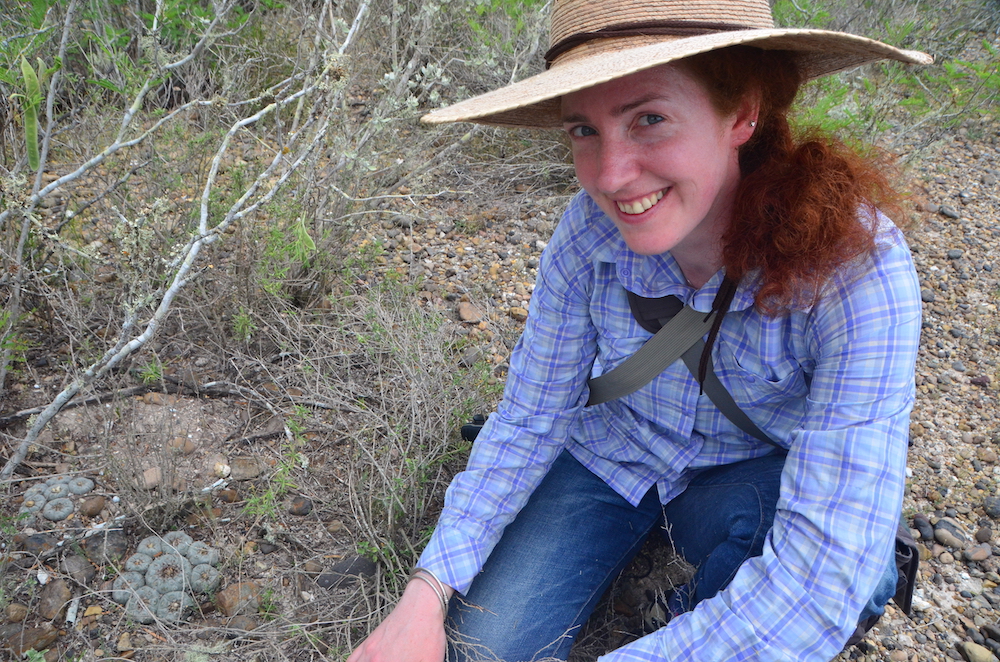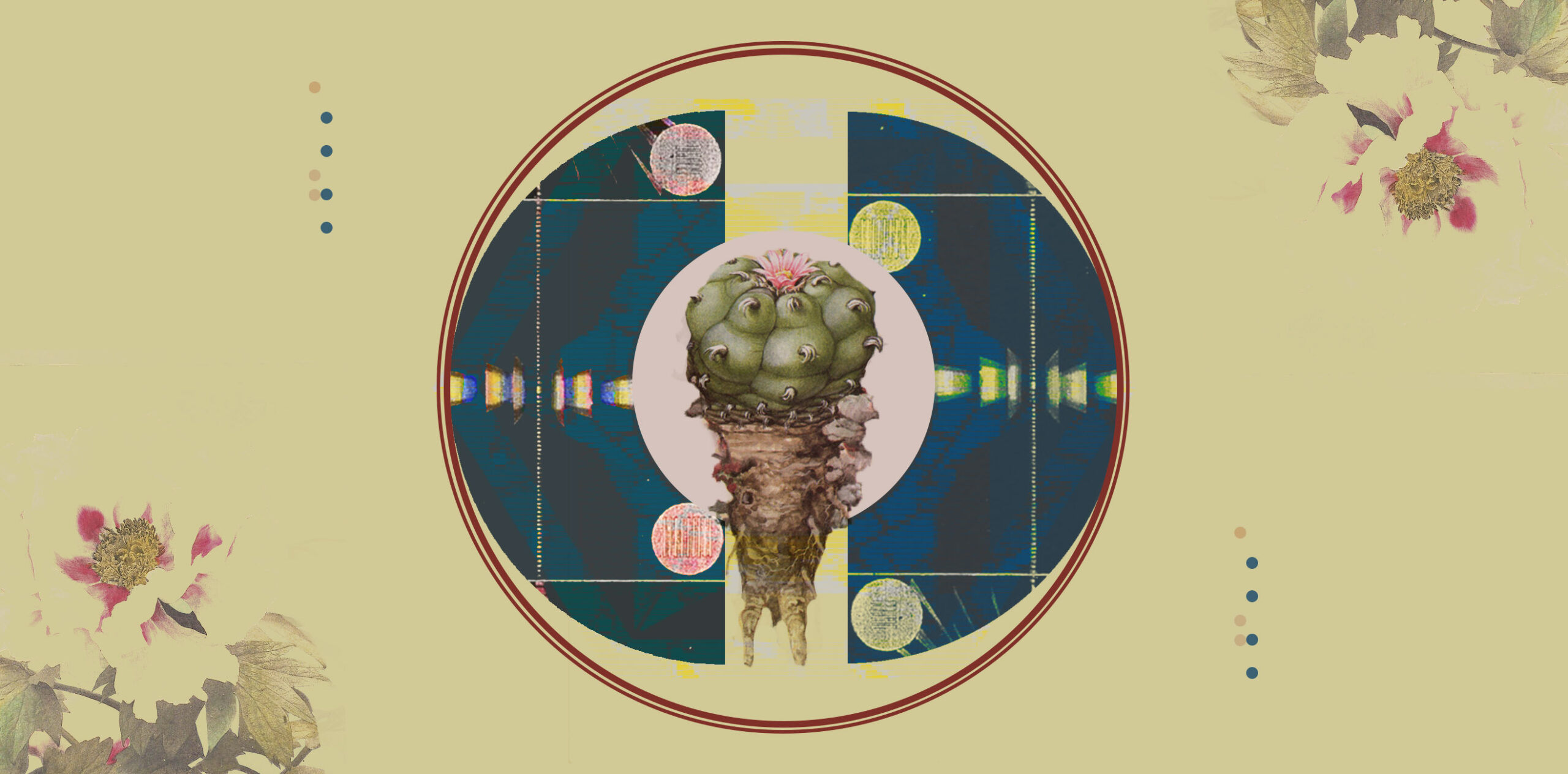Introduction to Lophophora williamsii (peyote)
Peyote is a small, psychoactive cactus that grows in Mexico and small part of Texas, in the USA. It grows in the Chihuahuan desert and Tamaulipan Thornscrub ecoregions. It is a very slow growing and long-lived cactus, taking more than 10 years to mature from seed. It produces pale pink flowers around March (late Feb–April depending on weather) and has a second flowering period in late summer (usually in August–September), and pink fruits in summer. The seeds are small and brown, and are dispersed by water, wind, and animals.
Currently peyote is facing multiple threats from the loss of habitat and unsustainable harvesting practices, and is listed as vulnerable in the IUCN Red list. Peyote is incredibly important for many indigenous people of North America. In the USA and Canada, it is estimated that as many as 500,000 members of the Native American Church use it as a sacrament and medicine. In the USA, peyote has been traded for more than 100 years, and the trade has been regulated since the 1960s. Peyote, and its main psychoactive alkaloid, mescaline, have been placed into Schedule 1 of the Controlled Substances Act. Native Americans have been exempted on religious freedom grounds from the harsh penalties of the Controlled Substances Act (CSA) and can legally purchase and consume peyote. There are strict rules and regulations about who can harvest peyote and where, and who can buy and consume peyote. However, currently there are no regulations on the harvesting practices that are not detrimental to the survival of the species.
Harvesting practices presented in these guidelines are intended to encourage people who harvest peyote to act as stewards of this unique medicinal species and its habitat. By following these guidelines, they are contributing to and protecting a sustainable future for wild peyote in the USA, and preserving a vital Native American tradition.
Peyote Anatomy

Sustainable Harvesting Guidelines
Harvesting guidelines include rotating the harvesting sites and regulating harvesting intensity and frequency to allow these slow-growing cacti to recover. Minimizing stress and injury to plants by harvesting correctly, and at specific times of a plant’s life cycle is also crucial.
1. Cut the green part of the plant, leaving subterranean stem and root intact.
Many harvested individual plants normally regrow after a mass harvesting event in a population, but some do not. Failure of some plants to regrow after harvesting is, in some cases, attributable to a loss of areoles in the subterranean stem, due to “deep cutting.” Yet, there is no reason to harvest the whole plant because the average mescaline concentration in the stem is an order of magnitude lower than that in the crown, and the mescaline concentration in the root is two orders of magnitude lower than that in the crown. Taking the root prevents the plant from re-growing and regenerating, but does not have any value as medicine.

a) Cut the plant at the base of the crown, at the ground level, leaving the subterranean stem, b) Harvested crown (green tissue), subterranean stem (bark-covered tissue underneath) capable of regenerating new crowns, tapering root, c) Two peyote “pups” regenerating from the stem of the plant that has been harvested 7.5 months before. The plants can generate new stem branches only from areoles on the subterranean stem of the adult plant, and when harvesting is done by cutting the plant too deeply below ground level, there is no possibility of regrowth, as the subterranean areoles just below the base of the crown are removed along with the crown of the harvested plant.
2. Rotate the gathering sites and re-harvest every 8 years
Although harvesting, if done correctly, does not kill peyote, removing the photosynthesizing part weakens it because the plant needs to use up resources stored in the subterranean stem and re-grow new crowns. Consequently, the re-growth is smaller and more susceptible to outside stressors, such as pathogens or extreme weather conditions. If harvesting is too frequent, it also depletes the reserves of the underground stem. The published data from the 6-year period of the longitudinal study demonstrates that 6 years is not enough for the plants to regenerate. Eight years is likely to be the minimum number of years to allow plants to regenerate after harvesting.
3. Harvest only mature plants, with 8 or more ribs
Number of ribs correlates with age and size of the plant, and is a metric that is easy to apply in the field. Small seedlings are usually 5-ribbed, and very old large “grandfather” plants have 13 ribs.
4. Leave some larger plants for the future
Mescaline content increases with size, but it is the largest plants that usually produce the most seed, so removing all of them them from the populations can substantially decrease seed availability.

5. Look after the plants
If young seedlings are disturbed while harvesting larger plants, or if cacti are found uprooted, for example by feral hogs, re-plant them.
6. Harvest during open season
Limiting harvesting to certain times of the year, e.g., after the seeds are produced, might increase the resilience of populations. Currently in the USA, peyote is harvested all year round. Seasonal variations in mescaline concentrations are unknown.
7. Leave the seeds
If there are seeds on the harvested plants, take them out and be sure to leave the seeds at the harvesting site.
8. Long-term solution to the “peyote crisis”
An ideal solution to overharvesting peyote from the wild is cultivation. Although it is currently challenging in the USA, and legislation varies state by state, this is the most sustainable solution in the long-term.
For more information please visit Cactus Conservation Institute
https://www.cactusconservation.org/
Art by Karina Alvarez.
Take a minute to browse our stock:
Did you enjoy reading this article?
Please support Chacruna's work by donating to us. We are an independent organization and we offer free education and advocacy for psychedelic plant medicines. We are a team of dedicated volunteers!
Can you help Chacruna advance cultural understanding around these substances?












